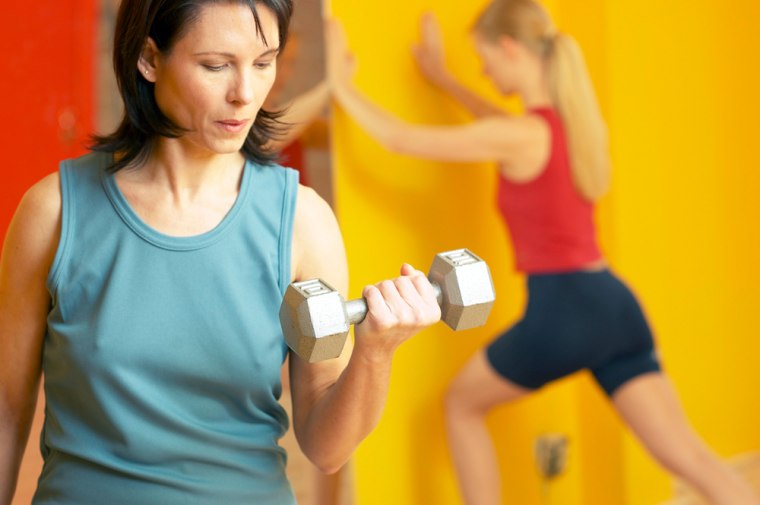Is getting fatter an inevitable part of aging? Does muscle turn to fat if you stop exercising? And how can some parts of our bodies be fat and others skinny? Smart Fitness answers your queries. Have an exercise question? To e-mail us, . We’ll post select answers in future columns.
Q: Does the ratio of fat to muscle necessarily increase as a person ages?
A: It often does — but it doesn't have to, says Wayne Westcott, fitness research director at the South Shore YMCA in Quincy, Mass., and a consultant to the American Council on Exercise.
"Unless doing strengthening exercises, the average male and female between ages 20 and 50 lose 5 to 7 pounds of muscle per decade and add three times as much fat per decade," says Westcott.
Do the math and you can see why people tend to become fatter and flabbier with age. As the obesity epidemic grows, the problem is only getting worse.
If we eat more and exercise less throughout the decades, the fat will pack on, especially since metabolism can slow down some with age, Westcott notes.
Our bodies will look even more out of shape if we don't work our muscles to keep them strong and firm. And in today's world, there are few opportunities to strengthen our muscles aside from lifting weights.
But you can fight back against fat and flab as you age. How? Start by losing weight or maintaining a healthy weight through diet and exercise.
How much exercise do you need? That depends on how much you eat and how active you are during the day, notes Jeanette Jenkins, a personal trainer in Los Angeles.
Weight loss amounts to calories in versus calories out. To lose a pound of fat, you need to create a deficit of 3,500 calories. Experts advise losing no more than a pound or two a week.
Federal health officials recommend that Americans get half an hour of moderate physical activity on most days of the week. That's enough to keep your heart healthy, but it may not be enough to promote weight loss. An Institute of Medicine report advised Americans to get an hour of physical activity a day to control their weight.
Heart-pumping activities such as jogging burn more calories minute-for-minute than lighter activities like walking. But walking is a great activity that many people can do. If you walk instead of jog, you'll just have to exercise longer to get the same calorie burn, says Jenkins.
If you're a beginner, it's important to start slowly. So begin by walking and work your way up to more challenging activities.
As for keeping your muscles in shape, Westcott says it doesn't take as much time as you might think. Even two, 20-minute sessions a week are enough to keep your muscles strong. Aim to work all major muscle groups, one set of 8 to 12 repetitions for each exercise.
Q: I've been lifting weights for awhile now, and my question is this: If I were to stop lifting completely, will my muscles turn into fat?
A: No, muscle is muscle and fat is fat. "You can't change muscle into fat or vice versa," explains Westcott.
People might get the impression that once-firm muscles have turned to fat if they quit strength-training and see flab where there used to be visible muscle. What's actually happening is that the muscles have atrophied — shrunk — so the tissue isn't as firm as before.
In addition, a person could gain more fat in that area, making it seem even more flabby.
Q: My arms and legs look great! But I have a problem with body fat in my hips and buttocks. Why is that? How can I be lean in one part of my body and fat in another?
A: Fat likes to take up residence in certain places more than others, and this varies by gender.
Women tend to accumulate fat in their hips, thighs and buttocks, leading to a "pear" body shape. Men tend to gain in the abdomen, leading to an "apple" shape. People who are apples or pears may not have much excess fat in other areas.
There are exceptions, of course. And people who are very overweight can gain almost everywhere — arms, face, calves, etc.
Smart Fitness appears every other Tuesday.
